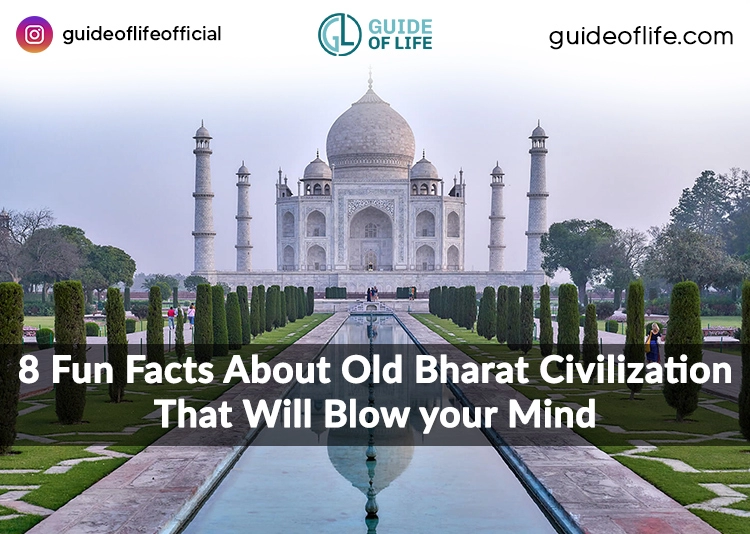8 Fun Facts About Old Bharat Civilization That Will Blow Your Mind

Introduction: Ancient History of India
India, often referred to as Bharat, boasts a rich and ancient history that dates back thousands of years. Its civilization, one of the world's oldest, is a treasure trove of fascinating facts that continue to amaze us today. In this blog, we'll journey through time to explore 8 fun facts about the old Bharat civilization that are sure to leave you astounded. From its predated existence to pioneering achievements in science, language, and culture, the Bharat civilization has a remarkable story to tell.
Fact #1: The Ancient Bharat Civilization Predates Other Major Civilizations
Imagine a time when the great pyramids of Egypt were not yet built, and the Mesopotamian cities were just emerging. The Bharat civilization, also known as the Indus Valley Civilization, thrived along the banks of the Indus River as early as 3300 BCE. This makes it older than both the Egyptian and Mesopotamian civilizations. Its longevity and cultural achievements continue to captivate historians and archaeologists worldwide.
Fact #2: Sanskrit, the Oldest Recorded Language
Sanskrit, the ancient language of Bharat, holds the distinction of being one of the oldest recorded languages in the world. It is the foundation of many modern Indo-Aryan languages and is celebrated for its complex grammar and rich vocabulary. The preservation of ancient texts in Sanskrit has been instrumental in unravelling the secrets of Bharat's past.
Fact #3: The Rigveda, One of the Oldest Religious Texts in the World
The Rigveda, a collection of ancient hymns and sacred verses, is the oldest known religious text in the world. Composed in Sanskrit, it dates back to around 1500 BCE, and its spiritual wisdom still influences Hinduism and other philosophical traditions. This text offers a window into the beliefs and practices of ancient Bharat.
Fact #4: Advanced Metallurgy and Use of Iron
Long before the Iron Age became prevalent in other parts of the world, the people of Bharat were mastering the art of metallurgy and using iron for various purposes. Their advanced knowledge of metallurgy allowed them to create intricate tools, weapons, and jewelry, showcasing their exceptional craftsmanship and technological advancements.
Fact #5: Indus Valley Civilization's Ingenious Urban Planning
The Indus Valley Civilization, a core part of the Bharat civilization, displayed remarkable urban planning and engineering. Cities like Mohenjo-Daro and Harappa featured well-organized streets, sewage systems, and advanced architecture. These innovations are evidence of an advanced and organized society that thrived thousands of years ago.
Fact #6: Concept of Zero and Decimal System Origins
The concept of zero, an essential mathematical foundation, is believed to have originated in Bharat. The ancient mathematicians of Bharat introduced the decimal system and laid the groundwork for modern mathematics. This revolutionary development continues to impact mathematics, science, and technology worldwide.
Fact #7: Ayurveda, the Ancient System of Medicine
Ayurveda, often referred to as the "Science of Life," is an ancient system of medicine that originated in Bharat. It emphasizes holistic well-being, incorporating herbal remedies, dietary practices, and yoga. Ayurveda's principles have been embraced globally, contributing to natural and holistic healthcare practices.
Fact #8: Epic Tales - Mahabharata and Ramayana
The epics Mahabharata and Ramayana are two of the world's longest epic poems and are deeply ingrained in Bharat's cultural fabric. These narratives explore intricate moral dilemmas, valor, and the human condition. They continue to inspire art, literature, and philosophy worldwide.
Fact #9: Established The First Universities
Bharat is the birthplace of the world's first universities, Takshashila and Nalanda. These ancient centers of learning attracted scholars and students from various corners of the world. They laid the foundation for modern education systems, emphasising the importance of knowledge dissemination.
Conclusion
The ancient Bharat civilization, with its rich history and profound contributions to human civilization, stands as a testament to the intellectual, cultural, and scientific achievements of our ancestors. As we marvel at these 8 fun facts, we gain a deeper appreciation for the enduring legacy of Bharat, a civilization that continues to shape our understanding of the past and the present.

